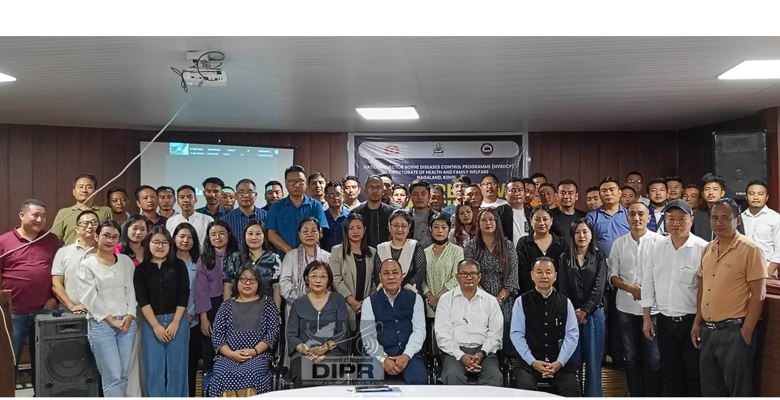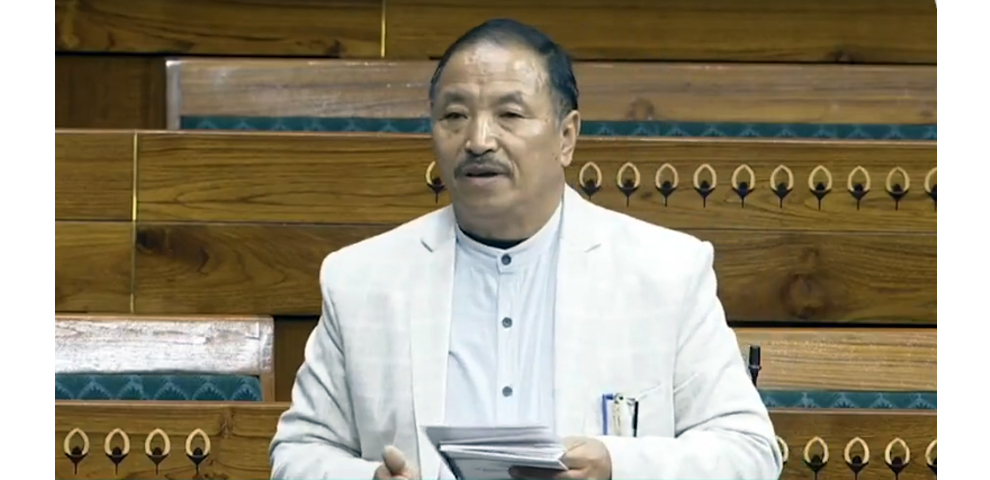The National Vector Borne Disease Control Programme (NVBDCP) conducted a two-day state review meeting at the Directorate of Health and Family Welfare (DHFW) conference hall on August 21-22, 2024. The meeting presented a detailed analysis of vector-borne disease trends in Nagaland, showcasing both the progress made and the challenges that remain.

Malaria cases in Nagaland have seen a remarkable decrease, dropping from 113 cases in 2018 to just 6 reported cases so far in 2024. The Annual Parasite Incidence (API) for all districts was reported to be less than 1 as of 2023, reflecting significant advancements in malaria control. This data was highlighted by Dr Neisakho Kere, Joint Director & SPO of NVBDCP. However, maintaining and further improving these results is crucial for achieving complete malaria elimination.
Dengue fever cases have also decreased substantially, with figures plummeting from 4,943 in 2023 to 11 in 2024. Despite this substantial reduction, Dr E Motsuthung Patton, Principal Director of DHFW, highlighted the need for continued vigilance due to last year’s dengue outbreaks in Dimapur and Mon.
The incidence of Acute Encephalitis Syndrome (AES) has decreased from 19 cases in 2023 to 8 cases in 2024, reflecting improved disease management. Dr. Kere noted this positive trend as part of the meeting’s review. In contrast, the Annual Blood Examination Rate (ABER) showed a slight increase from 9.53% in 2022 to 10.12% in 2023 but has since declined this year, falling short of the national target of 10%. This decline necessitates intensified efforts to improve ABER and meet the national goals.
No cases of Kala-azar or Filariasis were reported, but there are concerns about potentially undetected cases of Chikungunya due to limited sample collection. Dr Kere emphasized the need for increased testing in Kohima and Dimapur and advised Disease Vector Borne Officers (DVBOs) to alert medical officers if Chikungunya symptoms are suspected.
The review also touched upon the malaria elimination certification process. Dr LA Singh, Senior Regional Director of Imphal, explained that achieving WHO certification requires demonstrating no indigenous malaria cases for three consecutive years. This process involves a government request, a review by the Malaria Elimination Certification Panel (MECP), and a final decision by the WHO Director-General. Dr. Singh congratulated the NVBDCP staff for their efforts, noting that malaria cases in Nagaland are among the lowest in the country, and urged continued efforts to maintain these achievements.
The meeting underlined the importance of improved surveillance, particularly for migrant laborers, travelers, and refugees, to prevent disease resurgence. Continued improvements in blood slide collection and quality monitoring were also recommended, alongside ongoing public health campaigns and community awareness programs to sustain progress.
Overall, the NVBDCP state review meeting highlighted significant achievements in vector-borne disease control while also identifying critical areas for further action to ensure sustained health improvements in Nagaland.



